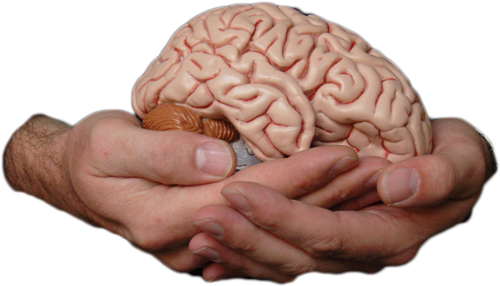
"I think therefore I am," Descartes said. While writing my book, Quitting, I analyzed how people think, process, and make decisions. While I fancied myself a thoughtful, detail-oriented, and thorough person, my research revealed the blind spots we all share when processing details to make smart choices.
If you are about to make a change or a decision, the quality of the choice depends on your ability to think through options. But are your thought processes dependable? The science says no. The degree to which our thinking is unconscious, automatic, influenced by external cues, and biased may come as a shock to you, as it certainly did to me.
Following are 6 myths I believed about thinking, and the real story:
1. I base my decisions on facts.
We might not ponder our decisions as much as we think. According to Nobel Prize winners Daniel Kahneman and Amos Twersky, we rely on the "availability heuristic" most often when we make a choice or decision. This mental shortcut—highlighting the most recent, mentally available “facts"—gives our brain a break when making a decision. Quick “connect the dots” thinking was valuable in human evolutionary history when dangers and perils required fast response. In today's hyper-connected world, we are more susceptible to the “available” facts as they pop up.
2. I weigh the pros and cons carefully when considering options.
Not really. Though we consider ourselves open to new opportunities and risk, more often we prioritize how much time, energy, and money we've already invested in a given path. The “sunk-cost fallacy” motivates us to stay in unsatisfying relationships, jobs, and everything else long past their expiration date.
3. I think more logically than other people
You probably don't. Repeated studies show that Americans think of themselves as “above average” in almost every domain. A famous study in the 1970s conducted by the College Board showed that 70% of those surveyed thought they had better-than-average leadership skills. When asked to rate their ability to get along with others, 60% put themselves in the top 10%, and 25% ranked themselves as being in the first percentile. (So, where do all the difficult people come from?)
A paper by David Dunning, Chip Heath, and Jerry M. Suls suggests that almost everything we think about ourselves is colored by one bias or another. This includes our ability to forecast how generous we will be, how quickly we will complete a task, and how we will act or react in a future situation.
4. I am an objective thinker.
Perhaps not. While we may notice other peoples' biases, researchers Emily Pronin, Daniel Lin, and Lee Ross found that most people have a “bias blind spot” toward themselves. When it comes to self-assessment, David Dunning and his colleagues report that, “in general, people’s self-views hold only a tenuous relationship with their actual behavior and performance.”
5. I am good at anticipating my own reactions.
According to Timothy Wilson and Daniel Gilbert, when we imagine a future scenario, we simplify it. The more complex a future situation turns out to be, then, the more unlikely that your prediction about how you will react will be accurate.
Julia Woodzicka and Marianne La France conducted an experiment in which they asked nearly 200 women how they would react if an older male asked them inappropriate questions during a job interview—such as, whether they had a boyfriend, whether men found them desirable, or whether they thought women should wear bras to work—and 62% of the women imagined that they’d be proactive, telling the guy off in some way, while 28% said they would simply bail and walk out; 65% said they’d refuse to answer at least one question.
Then the researchers had the participants go for what they believed was a real interview for a lab assistant position. Half of the women were asked the harassing questions by the male interviewer; the control group was asked odd, random questions which weren’t harassing. More than half of the women ignored the harassment. And while 36% asked why they were being asked these questions, four out of six of those participants only asked at the end of the interview. And no one walked out.
6. I pay close attention to detail.
Your brain is bombarded by so many stimuli that it has to use shortcuts so that you can form a picture, filling in the blanks so that you achieve coherence. In their article, “Gorillas in Our Midst," Daniel Simons and Christopher Chabris show how limited our powers of perception are when we are concentrating. The experimenters asked participants watching a video of a basketball game to count either the number of passes or bounces among the players; seconds into the video, someone dressed in a gorilla costume walked into the middle of the players. More than half of the people missed the gorilla.
The experiment exposed what is called “inattentional blindness,” which refers to our inability to notice or register the alteration of an important detail. Studies have shown that people fail to notice that heads on a photograph of two people have been switched; similarly, an experiment conducted by Daniel Simons revealed that change blindness actually took place in real-life situations. An experimenter posed as someone lost on a college campus, map in hand; he solicited the advice of passersby. But, as the experimenter and the pedestrian were talking, two men carrying a door passed between them, blocking the experimenter from view for a few moments. Another experimenter took the first experimenter’s place, also holding a map. Once again, only half of the pedestrians noticed the switch.

No comments:
Post a Comment